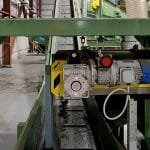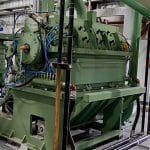RUBBER PULVERIZER PV1000
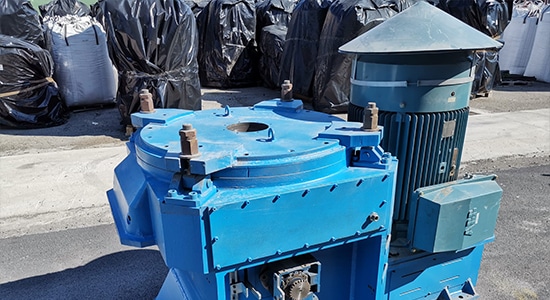
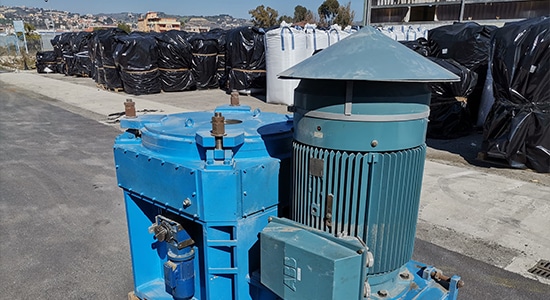
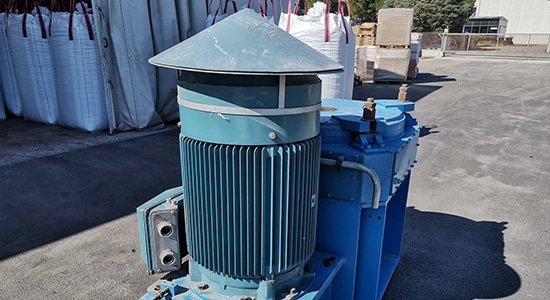
The PV1000 Pulverizer is a machine with long production experience dating back to 1995.
Built with characteristics suitable for processing vulcanized rubber, it offers production versatility and the possibility of being able to expand the system into multiple pulverization modules.
The aim
The capacities
The production capacity depended on the type of polymer and below we report an example case.
| Input Materiale | Granulometry | Kg/h |
|---|---|---|
| 0<>10 mm ELTs car | 0<>0,6 mm | 150 |
| 0<>1,5 mm | 200 |
This production is carried out with an energy absorption of 0.25 kW/Kg and with a maintenance cost of the cutting system of €0.035/Kg.
The choice of this type of machine turns out to be the most efficient for the possibility of expanding production in the future and at the same time optimizing your investment for the startup on the market.
The cutting group
Machine integration in the recovery process of end-of-life tyres
The machine is normally placed into the final stage of a plant and fed either automatically by production or via Big Bag. However, those factors will be discussed during the engineering phase for the order.
The market for used tyres powder
End-of-life tires are becoming a crucial element in the circular economy, and the rubber recycled from these tires finds various applications, including rubber powders.
The main release on the market is a product with a grain size of less than 1.5 mm which, divided into grain sizes, determines different sales scenarios for the product.
Example Asphalt Production and Benefits:
The use of recycled rubber powder from ELTs offers significant advantages, including:
Reduction of noise impact: Roads built with this technology are quieter.
Longer life: Up to 3 times that of conventional asphalts.
Wear resistance: Less formation of cracks and potholes.
Containment of maintenance costs in the medium-long term
Environmental and economic benefits
The use of ELTs recycled rubber powder contributes to waste reduction and the circular economy.
The superior performance of these road pavements leads to lower maintenance costs in the long term.
In summary, the use of rubber powder recycled from end-of-life tires is revolutionizing the road paving sector, offering more sustainable and high-performance solutions
The properties of rubber powder recycled from ELTs
Rubber powder recycled from End-of-Life Tires (ELTs) has various properties that make it an interesting material for various applications.
Here are some of the main properties:
- Elasticity and resilience: Recycled rubber retains its natural elasticity and ability to return to its original shape. This property is valuable for applications such as road paving, where the rubber must withstand the weight of vehicles and mechanical stress.
- Abrasion resistance: The recycled rubber powder is resistant to wear and abrasion. This feature makes it suitable for road paving, anti-slip panels and other applications subject to mechanical stress.
- Sound insulation: Recycled rubber reduces the noise produced by vehicular traffic. Therefore, it is used in modified asphalts to reduce the acoustic impact of roads.
- Weather resistance: Recycled rubber is stable and resists well the effects of sun, rain and temperature changes. This property is important for external flooring.
- Compatibility with bitumen: Rubber powder can be mixed with bitumen to create modified asphalts. These asphalts have superior performance compared to traditional ones.
- Sustainability: Using recycled rubber powder contributes to waste reduction and the circular economy.
In summary, ELTs recycled rubber powder offers a combination of mechanical, acoustic and environmental properties that make it a versatile and promising material for multiple industrial applications.

